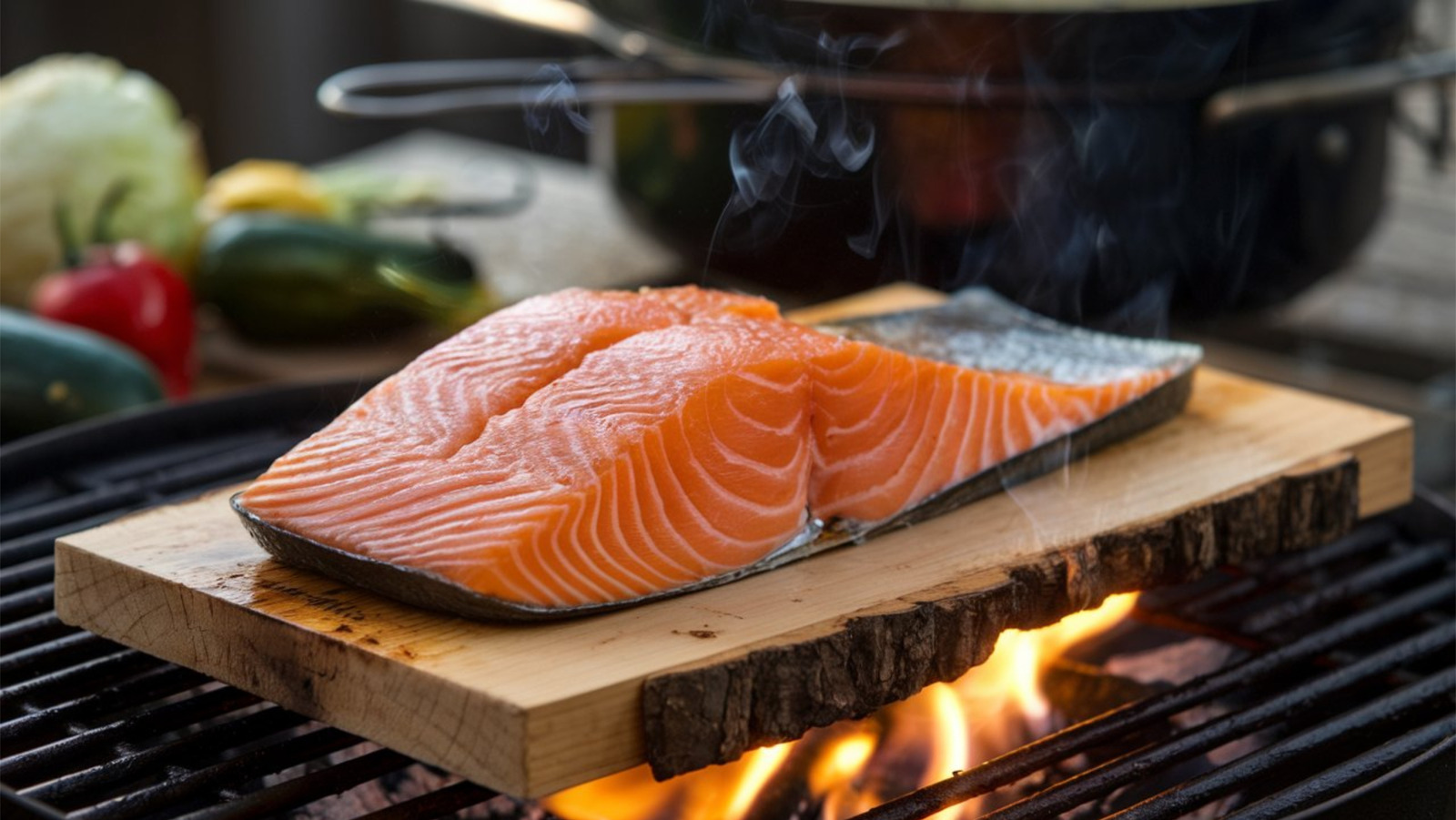
"For many seafood lovers, there's nothing more intoxicating than fresh salmon sizzling on fiery, aromatic cedar planks. This grilling method has skyrocketed in popularity far beyond its ancient roots, with pro chefs and backyard grillmeisters embracing the smoky, subtly sweet flavor the wood imparts - with no worries of dried-out fish, fillets sticking to grill grates, or precious bits nose-diving into a smoky abyss. To top it all off, those slightly charred cedar planks double as artsy serving boards straight from grill to table."
"With cedar wood, there's no need for oil, as the salmon steams to moist perfection with little hands-on interference. Instead of drying out, the cedar board absorbs the heat, transferring it indirectly to the salmon. It's an earthy, natural way of cooking fish, one that's hardly new in longtime culinary circles. Native peoples of the Pacific Northwest have been cooking with cedar for centuries, but it's far more than a utilitarian process."
Cedar plank grilling delivers smoky, subtly sweet flavor while preventing dried-out fish, sticking, and loss of fillets. Slightly charred cedar planks serve as both cooking surface and attractive serving boards. Cedar transfers heat indirectly, steaming salmon to moist perfection without added oil or heavy hands-on attention. The technique echoes older Pacific Northwest Native methods, where salmon was secured to cedar stakes or boards, covered with fir, and roasted over open pits. Salmon holds deep cultural, seasonal, and subsistence importance for coastal communities. Similar plank or stake roasting practices appear in Scandinavia and at European Christmas markets.
Read at Tasting Table
Unable to calculate read time
Collection
[
|
...
]